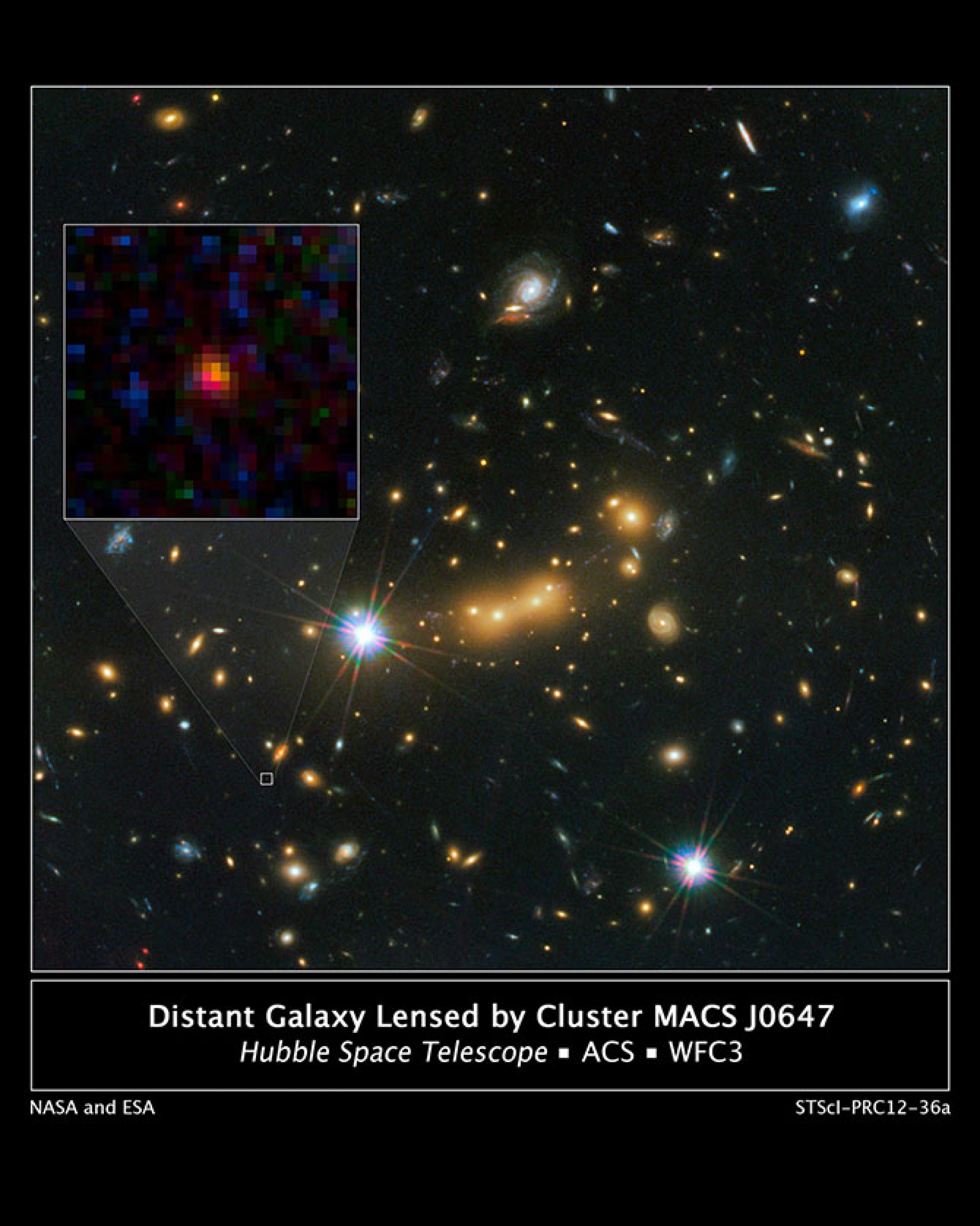NASA’s Hubble, Spitzer Space Telescopes Find Most Distant Galaxy Yet Known
Astronomers have found the most distant galaxy seen in the universe by combining the power of NASA's Hubble and Spitzer space telescopes and one of nature's own natural "zoom lenses" in space.
According to the scientists, the farthest galaxy looks like a very small blob that is only a tiny fraction of the size of our Milky Way galaxy. However, the object does offer a peek back into a time when the universe was 3 percent of its present age of 13.7 billion years.
Scientists said that the newly discovered galaxy, named MACS0647-JD, was observed 420 million years after the big bang, the theorized beginning of the universe. Its light has traveled 13.3 billion years to reach the Earth.
As far as the natural zoom lenses are concerned, this was the latest discovery from a program that uses them to reveal far-away galaxies in the early universe. The Cluster Lensing And Supernova Survey with Hubble (CLASH), an international group led by Marc Postman of the Space Telescope Science Institute in Baltimore, Md., is using massive galaxy clusters as cosmic telescopes to magnify distant galaxies behind them. This effect is called gravitational lensing, says NASA.
Without the cluster's magnification powers, astronomers would not have seen this remote galaxy. Because of gravitational lensing, the CLASH research team was able to observe three magnified images of MACS0647-JD with the Hubble telescope. The cluster's gravity boosted the light from the faraway galaxy, making the images appear about eight, seven, and two times brighter than they otherwise would.
"This cluster does what no manmade telescope can do," said Postman. "Without the magnification, it would require a Herculean effort to observe this galaxy."
NASA says MACS0647-JD is so small that it may be in the first steps of forming a larger galaxy. An analysis shows the galaxy is less than 600 light-years wide.
Based on observations of somewhat closer galaxies, astronomers estimate that a typical galaxy of a similar age should be about 2,000 light-years wide. For comparison, the Large Magellanic Cloud, a dwarf galaxy companion to the Milky Way, is 14,000 light-years wide. Our Milky Way is 150,000 light-years across.
"This object may be one of many building blocks of a galaxy," said the study's lead author Dan Coe of the Space Telescope Science Institute. "Over the next 13 billion years, it may have dozens, hundreds, or even thousands of merging events with other galaxies and galaxy fragments."
The galaxy was observed with 17 filters, spanning near-ultraviolet to near-infrared wavelengths, using Hubble's Wide Field Camera 3 (WFC3) and Advanced Camera for Surveys (ACS). Coe, a CLASH team member, discovered the galaxy in February while poring over a catalogue of thousands of gravitationally lensed objects found in Hubble observations of 17 clusters in the CLASH survey. But the galaxy appeared only in the two reddest filters.
"So either MACS0647-JD is a very red object, only shining at red wavelengths, or it is extremely distant and its light has been 'redshifted' to these wavelengths, or some combination of the two," Coe said. "We considered this full range of possibilities."
MACS0647-JD galaxy, however, may be too far for any current telescope to confirm the distance based on spectroscopy, which spreads out an object's light into thousands of colors. Nevertheless, Coe is confident the fledgling galaxy is the new distance champion based on its unique colors and the research team's extensive analysis.
MACS0647-JD is the second remote galaxy uncovered in the CLASH survey. Earlier this year, the CLASH team announced the discovery of a galaxy that existed when the universe was 490 million years old, 70 million years later than the new record-breaking galaxy. So far, the survey has completed observations for 20 of the 25 clusters.

© Copyright IBTimes 2024. All rights reserved.






















